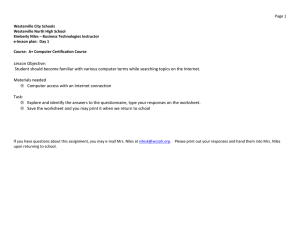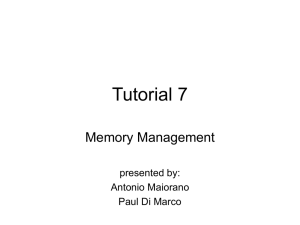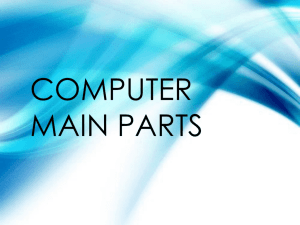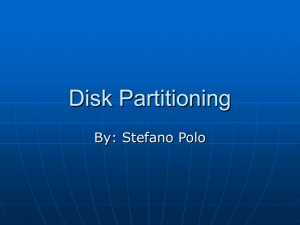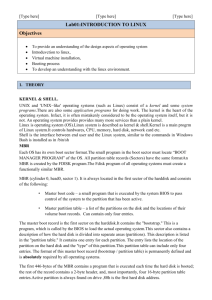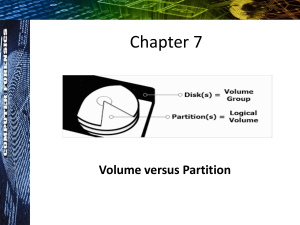FAT v NTFS
advertisement
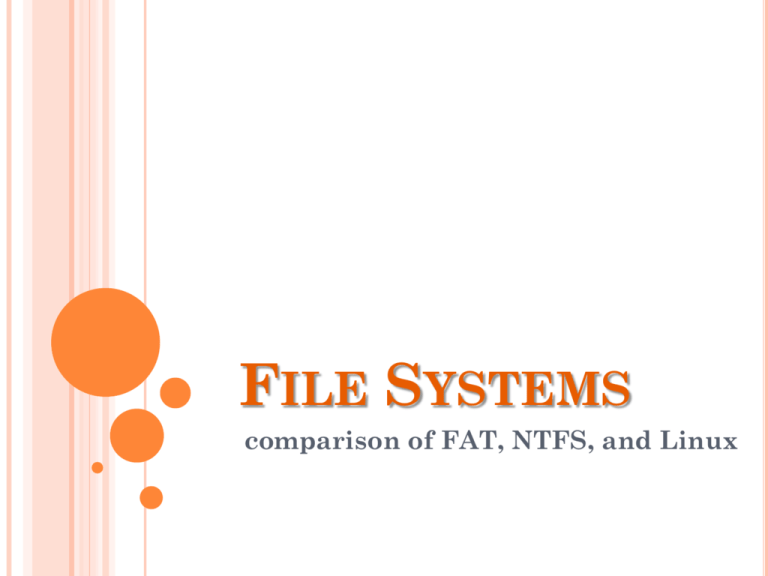
FILE SYSTEMS comparison of FAT, NTFS, and Linux TERMS Cluster smallest amount of space that can be allocated to hold a file big cluster sizes lead to wasted space, while small cluster sizes overburden the directory system cluster sizes range from 1 sector (.5K) to 128 sectors (64K) Disk Partitions You can break a drive into segments called partitions. a PC can have a Windows partition and a Linux partition Under Windows, each partition is a drive, eg C: Under Linux, each partition must be mounted to the directory tree boot sector | free space | FAT#1 | FAT#2 | data and directories … FAT File Allocation Table Used today in Memory Cards History Built by Microsoft for DOS FAT12 - 5.25" diskette FAT16 - 1984, IBM's DOS3.0 20MB hard drive FAT32 Windows95 max disk size 8TB of 32K clusters 2TB of .5K clusters suffers from disk fragmentation patent owned by Microsoft lots of lawsuits against cell phone and camera makers NTFS New Technology File System Developed by Microsoft used since Windows NT in early 1990s Journaling File System journal entries are made before each system change e.g., about to delete file "bob.htm" adds fault tolerance Features hard links and symbolic links to files (shared file with multiple names) Sparse Files (files full of lots of zeros) Disk Quotas NTFS Master File Table Metadata file name creation data size yadda yadda locations each metadata entry is buffered to size 1K Max File Size = 16 TB Max Volume Size using default 4K clusters = 16 TB using 64K clusters = 256 TB EXT3 A common file system for Linux used by Ubuntu implementation limits max file = 2 TB max partition = 32 TB Replaced by ext4 Layout seen in last class (i-nodes) avoids fragmentation by spreading files across disk LINUX PARTITIONS Linux helps with security requires multiple partitions e.g., a virus starts endlessly creating files to fill the disk, can only fill one partition helps with robustness killing one i-node list does not kill the whole system swap space (twice size of RAM) is a separate partition partitions can have different formats eg NTFS for read/write, but not booting DIFFERENCES Linux allows you to put /usr anywhere (any partition, even a partition on a network drive). Windows does not allow you to move C:\windows\system. Adding a new device (eg a flash drive) is a pain in linux. Fragmentation FAT is easily fragmented NTFS is somewhat vulnerable ext3 avoids fragmentation ext4 does not have fragmented files all file writes are buffered NEXT CLASSES File Systems 1. 2. 3. 4. Linux File and Directory System - last class Comparison of File Systems - today Programming with Temporary and Shared Files Disk Engineering and Analysis


